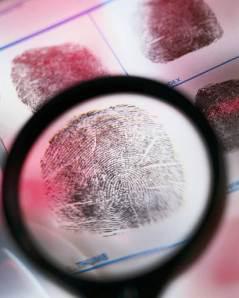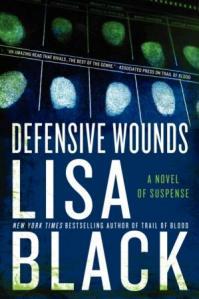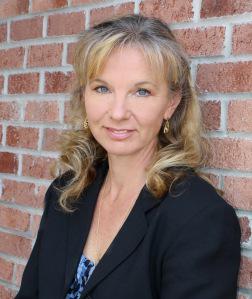My guest today is Latent Print Examiner and CSI Lisa Black. She will discuss some of the rules for expert witness testimony in the courtroom.
EXPERT WITNESS TESTIMONY IN THE COURTROOM
How does a judge decide which expert witnesses should be allowed to present evidence to a jury? Fingerprint identifications are admitted; lie detector tests are not. What is the basis for this decision?

For any body of knowledge to be accepted in court it has to pass either Frye or Daubert standards. Frye vs. U.S., (1923) held that expert testimony must be based on scientific methods which are sufficiently established and accepted to have gained general acceptance in its particular field. About 21 states use the Frye standard. The remaining states have adopted the 1993 Daubert vs. Merrell Dow (1995) suggestions (not requirements, though they are treated as such): Has the technique been tested in actual field conditions (and not just in a laboratory)? Has the technique been subject to peer review and publication? What is the known or potential rate of error? Do standards exist for the control of the technique’s operation? Has the technique been generally accepted within the relevant scientific community?
Fingerprint science easily satisfies all these factors except for one possible sticking point — the error rate. Examiners say there is no error rate, which sounds to non-examiners as if we’re insisting upon our own infallibility, but we say that because as mentioned before, the methodology always corrects the errors, so there might be errors by people but not by the methodology. In a more basic sense an error rate is impossible to concoct, and not only because we can’t agree on what an error would be. Do clerical errors count? Do non-identifications count, where the prints really did match but the examiner didn’t want to say so, either because they rushed through too fast to see it or because they didn’t feel comfortable testifying to it? We encourage examiners not to go out on a limb if they’re not willing to put their job on the line for a statement made in court, but should this considered an error just as saying the prints match when they don’t? And would the number of any errors be divided by the number of identifications—in which case the error rate would be miniscule—or by the number of comparisons, in which case the rate would be incomprehensibly infinitesimal. And the only times we know that an examiner has said prints match when they don’t is when another examiner catches this error—and therefore the methodology works, therefore it’s not an error of the methodology. And we certainly can’t base an error rate on assumed errors that we didn’t catch, because we have no proof that they exist. Hence, no error rate.
So if your manuscript revolves around evidence presented in court, you might want to check out whether you live in a Daubert state or a Frye state!

Lisa Black’s fourth book Defensive Wounds was released by Harper Collins on September 27. Forensic scientist Theresa MacLean battles a serial killer operating at an attorney’s convention. Lisa is a full time latent print examiner and CSI for a police department in Florida.

